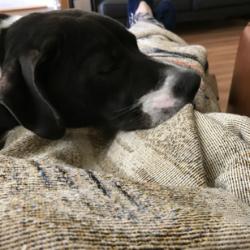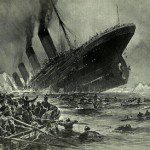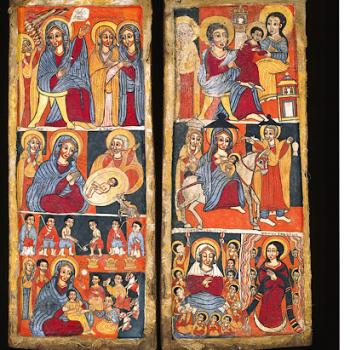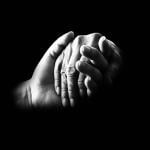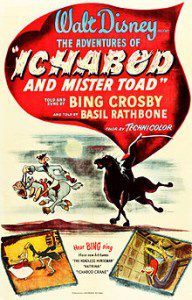 This movie haunted my dreams as a child. There may be a more frightening scene to today’s kids than Ichabod being chased by the “headless horseman,” but if so I pity any kid who sees it. This is a wholesome fear . . . the kind of fear a kid should have. There are boogie men in the world and there is worse advice than running home after it is dark. The fear isn’t warped or unreasonable. Nobody has to tell a child to be afraid of things that go bump in the night nor does it help to explain there is “nothing there” anymore than telling a man afraid to fly the statistics to calm him down.
This movie haunted my dreams as a child. There may be a more frightening scene to today’s kids than Ichabod being chased by the “headless horseman,” but if so I pity any kid who sees it. This is a wholesome fear . . . the kind of fear a kid should have. There are boogie men in the world and there is worse advice than running home after it is dark. The fear isn’t warped or unreasonable. Nobody has to tell a child to be afraid of things that go bump in the night nor does it help to explain there is “nothing there” anymore than telling a man afraid to fly the statistics to calm him down.
We know by instinct the truth: there are horrors unseen and things that go bump in the night. Of course, given the era, Walt has to tell the tale with a naturalistic twist just like every Scooby Doo episode to come, but it is the ghost that one remembers, not the “happy” ending.
And Toad Hall sticks in the mind, but only later as one recovers from the shivers.
If there is movie more jolly, bright, and amusing in a no-laugh-out-loud-but-serious-smiling way than Wind in the Willows, I can’t think what that film is. Like any good Disneyland ride, this movie starts with a laugh, has some mild thrills, and ends with a salutary lesson. Ride Pirates of the Caribbean and you will see the pattern.
What did Walt teach me?
First, he reminded me that England and America were two nations separated by a common mythology. We share Arthur, Holmes, and Robin Hood, but Americans do something different to them. Our folk tales run to Pecos Bill, Davey Crocket, John Henry, and Paul Bunyan. Walt never got to make his dreamed of Oz film, but like Frank L. Baum and young America, Walt was an optimist. Arthur is tragic in Britain and a boy in America (Sword in the Stone). And yet there is, as anyone who reads his life knows, a realism to Walt. This is misunderstood as a dark side, but it is simply American knowledge. Our promise and our golden dream “was not born in a day” (as the ride Great Moments with Mr Lincoln intones), but dearly bought.
America is a possibility to England’s actuality, but the Mother Country turned out pretty well and we might (still) turn out to have wasted our moment and chance of glory. Walt did not think we would, but he knew poverty and the curse of religion turned from grace to law. England was fading into twilight, but America was facing the scrutiny of the noon day sun.
The British tale in the collection is old-fashioned and of faded glory. The Empire was dying when it was made and the Pax Americana beginning. The midnight voice of Rathbone who narrated for the English contrasts perfectly with the sunny optimism of Der Bingle. Bing Crosby owns the second part of the film as Walt let the voice of the 1940’s get America safely over the frightful end of the war years to Eisenhower and the 1950’s.
This may not be the right view of England and America anymore, but Walt buried it deep into the psyche of at least one generation.
Second, Walt, as he so often did, began his tales with a book . . . in this case two books. Do not overlook the impression this made. We knew he was just giving a piece of the stories and I cannot be the only one to read (and love) the Wind in the Willows because Walt took me on Mr. Toad’s wild ride. For Disney films were not adaptations of books, but retelling. He would not film the Jungle Book as Kipling wrote it, but a Jungle Book that Kipling would have shot on film.
Walt knew the media were different. I always “liked” the books better because I am a bookish man, but movies are not “worse” in a negative way. A movie man might prefer that art to the literary one and this would be fine. The joy is in learning to love both for what they are: different story telling devices with different limits and rules. Even the most bookish would struggle to prefer Irving’s ponderous tale to Walt’s retelling.
Finally, Walt hadn’t given up and these two “shorts” in one package show it. In the pit of Melody Time, labor was beginning on better things. These two film ideas would never get the full Disney treatment (pity!), but they got the studio back up to speed. Walt Disney was turning back to animation as he geared up for a run in the 1950’s and 1960’s as potent and splendid as any that the promise of the 1930’s could have predicated. Disney was about to change the world again, this time not as the Boy Genius, but as Uncle Walt.
He was going to save liberal values from Marxism by telling a better tale.



